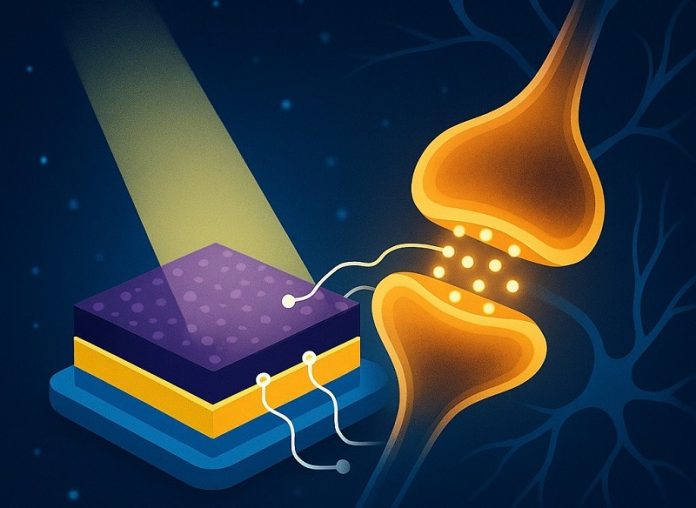
Scientists have developed a new material that can turn light into electrical signals and behave much like the brain’s own nerve cells.
This breakthrough brings researchers a step closer to building electronic systems that can “learn” in a similar way to how our brains do.
The research was carried out by a team of scientists from Forschungszentrum Jülich and RWTH Aachen University in Germany, with key contributions from Professor Francesca Santoro and Dr. Valeria Criscuolo.
Their findings were recently published in the journal Advanced Science.
Our brains work through billions of tiny connections called synapses.
These synapses pass signals from one nerve cell to another and get stronger or weaker over time as we learn and remember things. Scientists are now trying to recreate this kind of behavior in electronic devices—a field known as neuromorphic electronics.
The new devices developed by this team are called organic photoelectrochemical transistors, or OPECTs.
These small, flexible components can react to light by generating an electrical signal, mimicking how real synapses in the brain work.
What makes this new material especially promising is that it can be precisely adjusted using chemistry. That means researchers can tune it to be more sensitive to light or to send signals more consistently, depending on what it’s being used for.
One of the biggest advantages of this material is its flexibility and biocompatibility—it can bend without breaking and is safe to use with human cells.
The team used a soft plastic called PEDOT:PSS, which conducts electricity and is already known for being safe to use in medical devices. They modified it with special light-sensitive molecules to make it respond to light like real nerve tissue.
This research opens up a range of possible future applications. For example, these light-sensitive materials could one day be used in visual prostheses—devices that help restore sight to people with damaged retinas.
The technology might also be used to create highly sensitive optical sensors, or to build new kinds of brain–machine interfaces that allow people to control devices with their thoughts.
Before this can happen, however, the technology must be tested thoroughly to make sure it’s safe and works well with real tissue. The researchers are currently conducting lab tests to see how the material interacts with nerve cells and whether it can be used safely in the body.
If successful, this work could lead to exciting new treatments for vision problems and help create more advanced, brain-like electronics in the future.



